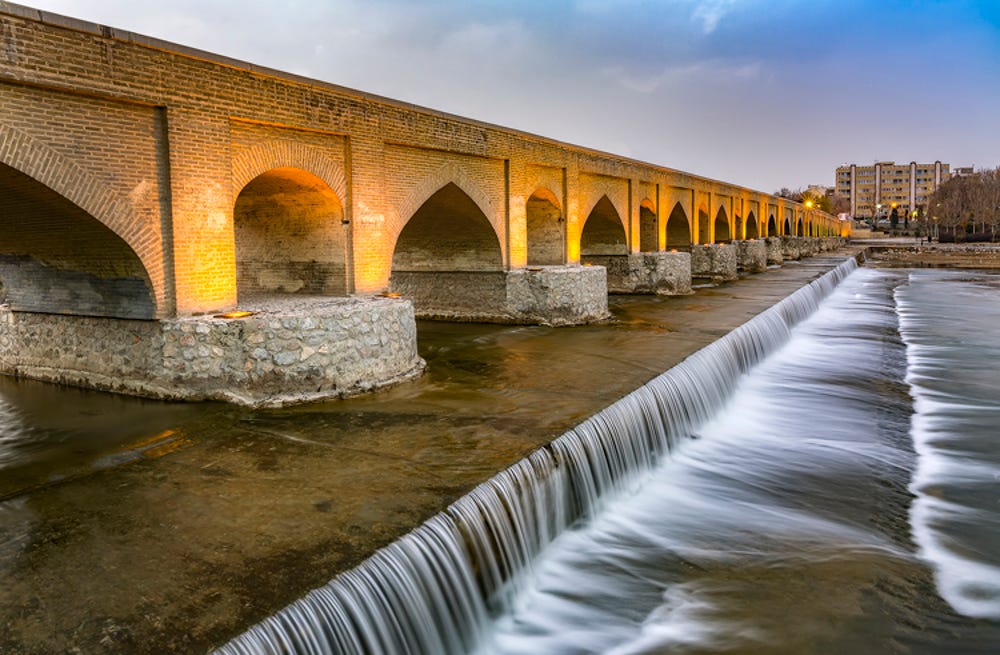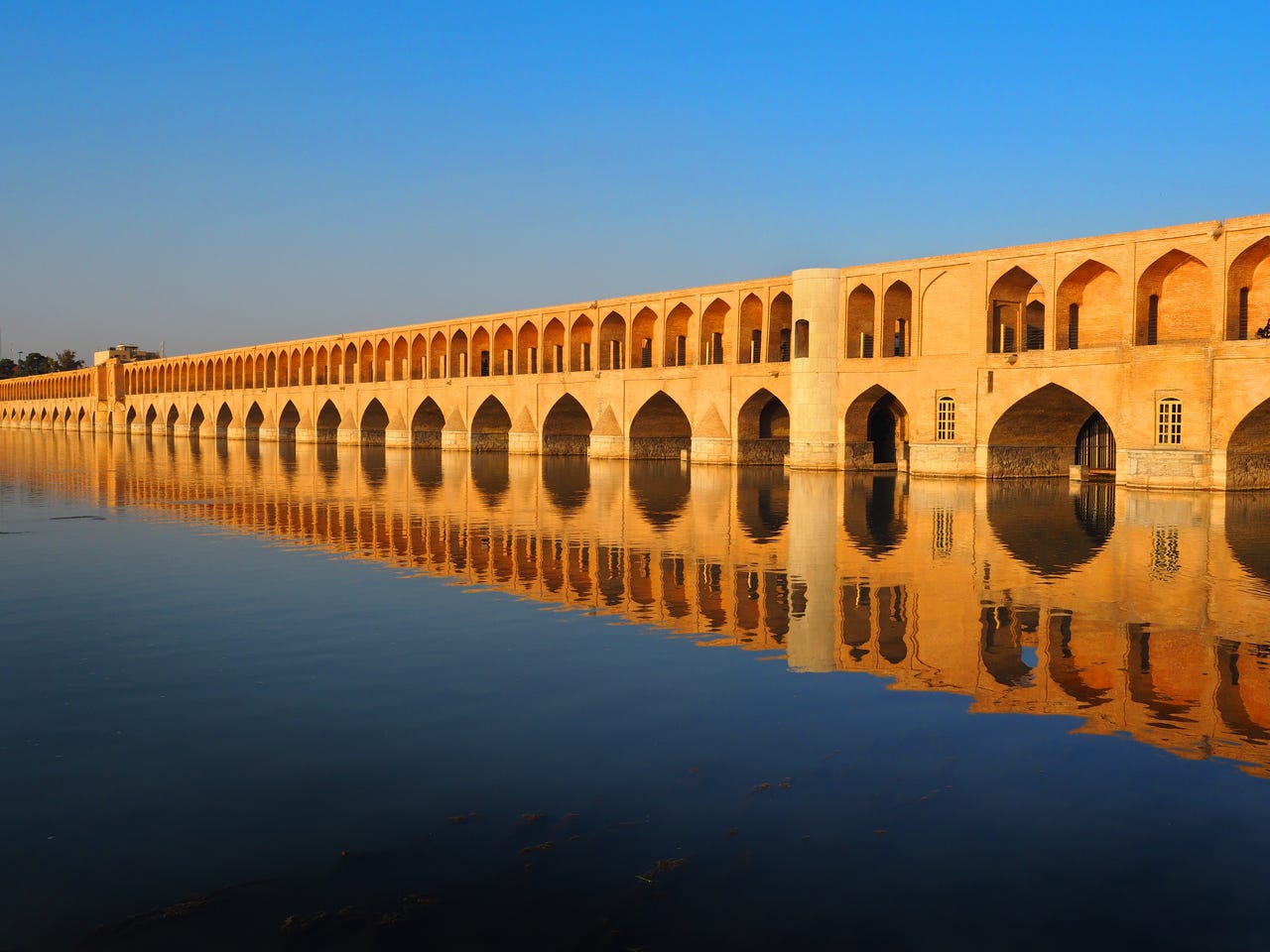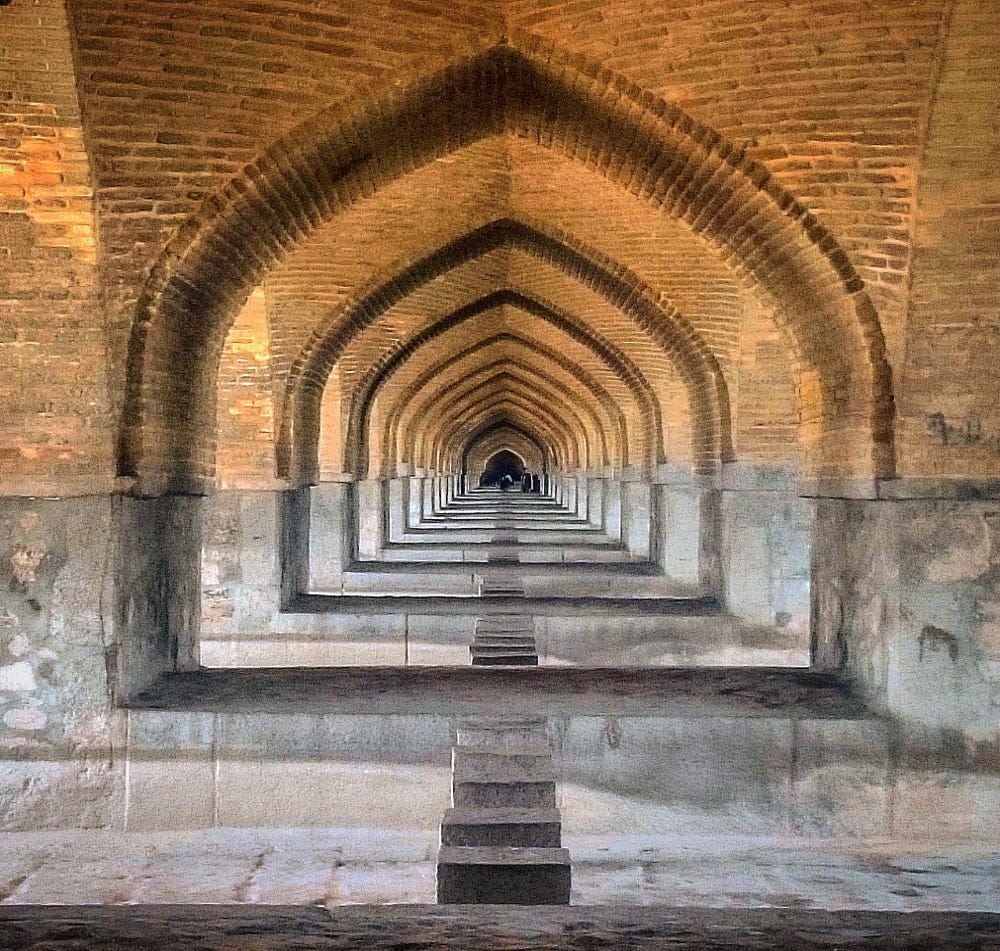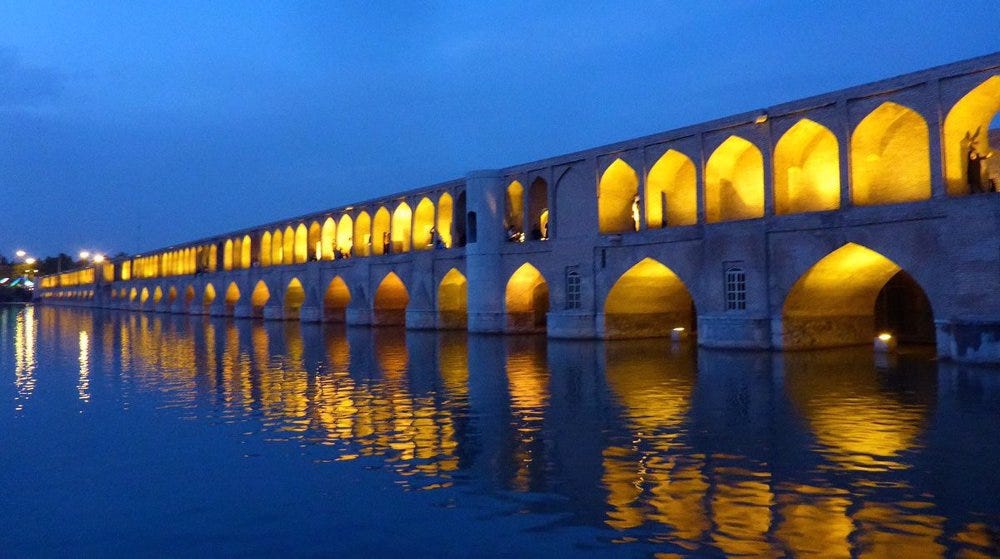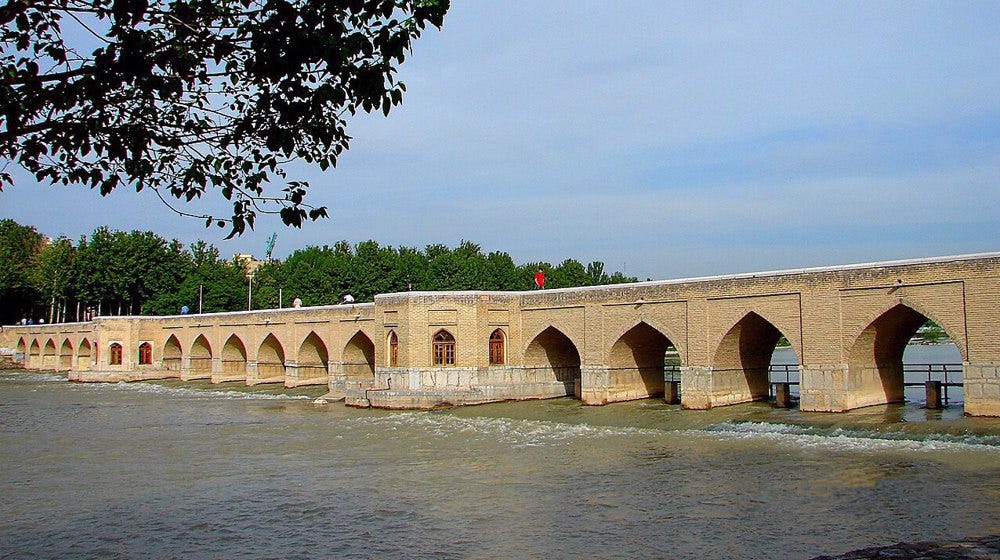Bridges of Blessing: The Safavid Marvels of Isfahan
How Isfahan’s legendary Safavid-era bridges unite faith, art, and community
Isfahan’s bridges over the Zayandeh River are more than just crossings — they are enduring symbols of belief, craftsmanship, and community life. Built during the Safavid era with deep care for both function and spiritual beauty, bridges such as Si-o-se-pol, Khaju, Shahrestan, Jubi and Marnan reflect the city’s vision under rulers like Shah Abbas I: a living capital where faith, arts and society walk hand in hand.
Ancient Foundations, Eternal Purpose
The oldest among them, Shahrestan Bridge, dates to Sassanid times, but its current form was largely shaped during Seljuk and Safavid rule. Though simple in structure — built with brick, stone and arches — it connected people, facilitated travel and trade, and became part of daily ritual.
Marnan Bridge, further upstream, carries seventeen arches and stands as a quieter counterpart to some of the more ornate bridges. Restored after flood damage, it continues the tradition of combining resilience and beauty.
Si-o-se-pol: The Bridge That Speaks
Si-o-se-pol (Thirty-Three Arches) is perhaps the most famous. It is central to Isfahan’s layout — aligned with Chaharbagh Boulevard and royal gardens — and built deliberately not at the river’s narrowest point but where the grandest vistas could be achieved.
Its architecture embodies both spiritual symbolism and engineering sophistication:
Its arches and pavilions were places of gathering: for prayers, reflection, and poetry.
Its 33 main spans mirror numerological symbolism, and above and between them are smaller arches — in total a number of arches that echo traditional Islamic motifs — offering serene views and spiritual reminders.
The bridge also functioned hydrologically: sluice gates, stone foundations, and careful design allowed it to manage floodwaters, supply gardens, and even serve as a low dam in part.
Even today, Si-o-se-pol remains a place for gatherings — at dusk people come to walk, pray, and be inspired by the flowing water and the silhouettes of domes and minarets.
More Than Stone: Khaju and Jubi
Khaju Bridge, built under Shah Abbas II, shares many of Si-o-se-pol’s features: its dual function as crossing and dam (weir), its arcades and pavilions. Yet it adds its own style — a central pavilion for royal viewing, decorations and periods of vibrant artistic expression. It was once the setting for Nowruz celebrations, poetry and communal life.
Jubi Bridge (also called Saadatabad Bridge) was more private: connecting palaces and gardens on both sides of the river. Built with royal leisure in mind, it channelled water to important gardens, framed by beautiful arches and retreats.
Spiritual Threads and Social Bridges
These structures are not just feats of architecture. They are woven deeply into the spiritual, social, and emotional fabric of Isfahan:
They remind us that in Islam — particularly in Shia tradition — beauty and function serve higher ends, whether it be community, remembrance, or hospitality.
They show the unity between different faiths and ethnicities: Christian Armenians, Muslim Persians, converted guardians like Allahverdi Khan; all are part of the story.
They are stages for ritual and festivity — for praise, poetry, processions, blessings of water — bridging not just riverbanks but souls.
If you journey to Isfahan, spending time by these bridges offers an opportunity to connect with centuries of faith expressed in stone and flowing water. They remind us: faith builds more than temples. It builds bridges — between people, between heaven and earth.
How Shia Journeys Can Help
At Shia Journeys, we design immersive travel experiences that go beyond sightseeing. Our guided trips to Isfahan can include not only visits to its stunning bridges, mosques, and gardens but also deeper cultural and spiritual encounters — walking tours at sunset, storytelling sessions about Safavid history, and time for reflection by the Zayandeh River. We help you connect the beauty of these landmarks with the living spirit of Shia heritage.




